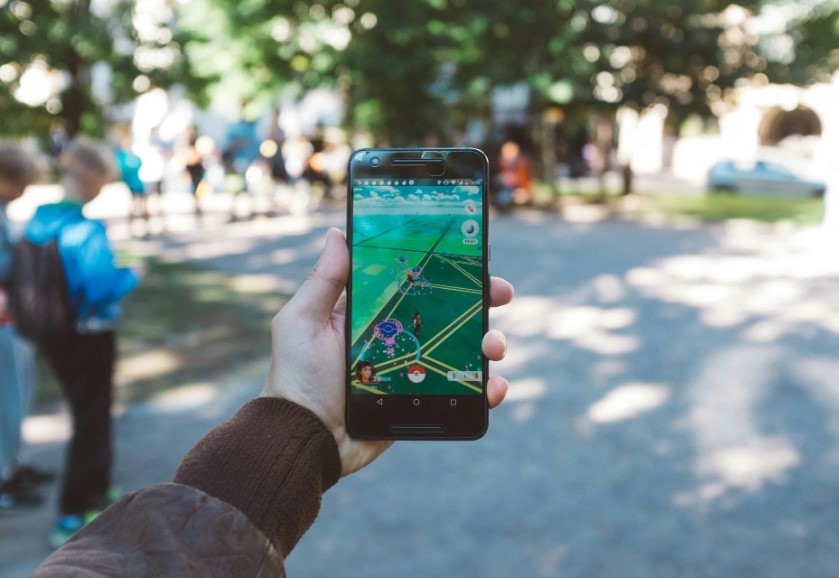When Pokémon Go was released in 2016, it blew up to become the next cultural phenomenon. Players hunted virtual creatures across parks, streets, and landmarks millions of times. However, behind the game’s success, Niantic was doing more than gamifying augmented reality (AR). With Pokémon Go they used their data to create a cutting-edge geospatial AI model that revolutionizes how robots and devices work in the physical world.
While this one sounds like a navigation and robotics innovation, it also raises important questions about consent and privacy. Let’s see how Pokémon Go’s data is truly changing the industry, not just tech and policy circles.
By the way, the news is shocking, but if you don’t care about this and only care about the game, Pokemon GO for sale on U7BUY. You can find many accounts priced as low as $10 to $100.
How Niantic Collects and Uses Pokémon Go Data

Niantic’s Large Geospatial Model (LGM) is at the core of its AI development. The model combines data collected from Pokémon Go and other AR games like Ingress. These datasets are derived from:
- Pokémon Playgrounds and PokéStops: Players leave virtual markers or interact with real-world landmarks, creating precise geospatial Pokemon Go data.
- Visual Positioning System (VPS): By capturing scans and images, the VPS pinpoints phone locations with centimeter-level accuracy. This technology provides a more detailed pedestrian perspective compared to vehicle-based systems like Google Maps.
The geospatial data is used to train over 50 million neural networks, combining localized information into a global understanding of real-world environments. For example, Niantic’s AI can generalize how a church might look from different angles, even if only certain sides have been scanned.
Applications of Niantic’s Geospatial AI
The transformative potential of this model spans several industries:
1. Augmented Reality (AR)
The AI behind AR experiences from Niantic helps integrate virtual objects into the physical world. AR applications have the ability to include more immersive gameplay, while players can participate in retail, education, and tourism.
2. Robotics and Autonomous Systems
These detailed 3D maps of the Earth mean that robots and drones can use them to navigate. Unlike traditional GPS systems, the AI is more nuanced about pedestrian paths, parks, and other hard-to-map areas.
3. Urban Planning and Logistics
City planners can utilize these models for designing efficient pathways for pedestrians and vehicles, while delivery companies may use AI to optimize routes in urban environments.
4. AR Glasses and Wearable Tech
The AI model supports AR glasses by providing real-time, location-based overlays. This innovation could revolutionize wearable technology by improving spatial awareness.
Ethical and Privacy Concerns
Niantic’s reliance on Pokémon Go data has sparked debates over transparency and privacy:
- Passive Data Collection: Critics highlight that location data may be collected even when users are not actively playing the game, raising concerns about informed consent.
- Potential Misuse: While Niantic markets its technology as a tool for AR and robotics, some fear its use in surveillance or even military applications.
- Data Ownership: Players often remain unaware of how their contributions are used to train AI models, leading to calls for greater transparency and user control over data.
Niantic asserts that features like PokéStop scanning are optional and that personal identifiers, such as names or emails, are not shared with third parties. However, the sheer scale of data collection—over 10 million scanned locations globally—underscores the need for robust Pokémon Go data governance.
Niantic’s Competitive Edge

What sets Niantic apart is its pedestrian-focused data collection. Unlike Google Maps, which primarily relies on vehicle-mounted cameras, Pokémon Go collects data from sidewalks, parks, and interior spaces. This granularity gives Niantic an edge in creating models suited for human-scale interactions. If you’re looking for a platform to buy games and game items at a cheap price, U7BUY is your go-to platform. Visit the site and see if a deal catches your eye.
Additionally, its temporal data—capturing locations across seasons and lighting conditions—enhances the model’s adaptability, making it ideal for applications like disaster response or urban development.
The Road Ahead
Niantic’s geospatial AI is poised to reshape industries, but its future depends on how the company navigates ethical challenges. Key developments to watch include:
- Dynamic AI Capabilities: As the model becomes more sophisticated, it could enable robots to predict environmental changes or optimize their navigation in real time.
- Collaboration Across Sectors: Niantic is likely to partner with companies in logistics, urban planning, and wearable tech to commercialize its innovations.
- Regulatory Oversight: As concerns over privacy mount, government intervention may shape how companies like Niantic collect and use Pokémon Go data.
Final Thoughts
You can see how gaming meets state-of-the-art technology in Niantic’s use of Pokémon Go data in their geospatial AI. This is a huge deal for AR, robotics, and navigation, but it also puts forward the necessity for transparency and ethical Pokémon Go data practices.
As Niantic continues to refine its model, it has the potential to lead a new era of spatial computing. Whether this journey becomes a blueprint for responsible AI or a cautionary tale depends on how well the company addresses concerns over privacy and consent.



